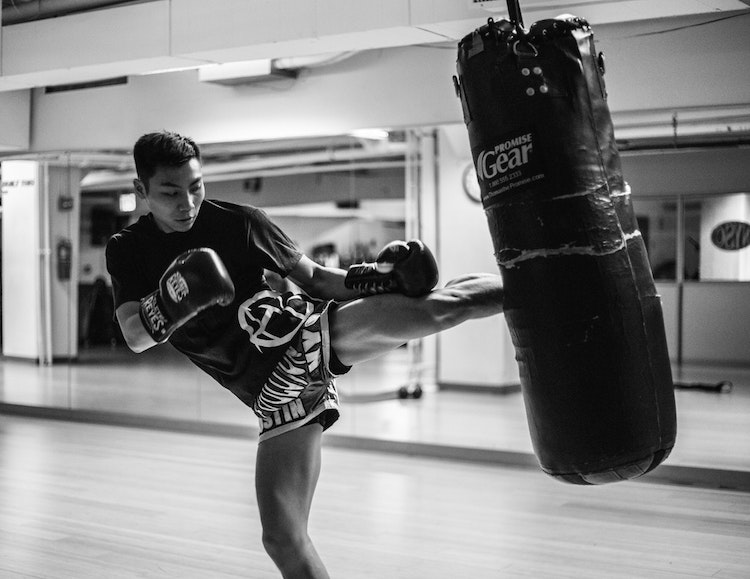MMA and Bodybuilding: How They Work Together
So, you’re into bodybuilding and MMA? You and every other twenty-something! Not that there’s anything wrong with that combo, but most guys simply fail at both. It’s hard enough to build muscle, and when you add in intense fighting and conditioning work, keeping your gains can seem all but impossible. Constant soreness and fatigue don’t make things any easier, either.
Don’t give up, though – it’s definitely possible to be a big, lean, and well-conditioned fighter. You’ve just got to learn how to organize your training for optimal recovery and results.
Setting Priorities

Before you dive into a new regimen, you need to be clear about your goals and priorities. What’s most important to you? Are you training for a specific fight, or do you just want to learn some combat skills? Are you trying to win a bodybuilding show, or do you just want to improve your physique? Most importantly, do you need to gain weight or lose it?
While you can certainly make multiple improvements at once, you’re probably not going to be GREAT at everything. The top MMA guys may be ripped, but they’re not gargantuan bodybuilders. Likewise, you won’t see Mr. Olympia stepping into the octagon anytime soon.
To make things simple, settle on one primary and one secondary goal. I’ll assume that most of you MMA hobbyists are mainly interested in fighting, but that you still want to get gradually bigger and leaner. Here’s how to do it.
Staying Strong

When you’re in the weight room or on the track, forget about “sport-specific” training. Crazy little exercises that “mimic” certain movement patterns aren’t magically going to make you a better fighter. Do your skills training in the ring, and use the gym to get strong and conditioned.
To that end, you should keep doing the same stuff you’ve been doing: squats, presses, and pulls. Use heavy weights, challenge yourself, and always strive to add more weight and reps. I guarantee you that a big deadlift will do more for your striking power than “boxing” with dumbbells in your hands.
That being said, you probably won’t be able to get away with as much weight room work as usual. If you’re drilling and sparring a few times per week, you’re going to get worn out – period. Be conservative and reduce your weight training to three or four times per week, max. If you try to do too much, you might actually regress in strength and lose muscle.
Brutal Circuits
Now that we’ve gotten the strength training squared away, we need to talk conditioning. If you’ve been training like a bodybuilder or powerlifter, chances are that your cardio’s not quite up to snuff. Don’t think you have to hop on a treadmill or go jogging, though – there are FAR more effective methods for getting into fighting shape.
My favorite? Circuit work. Load up a barbell or two with a light weight, and do several reps of several exercises with NO rest in between. You might do ten reps each of squats, overhead presses, rows, and deadlifts, with 95 pounds, for six or eight total rounds. That sounds easy on paper, but it will SUCK if you’re not used to it.
Circuit options are virtually limitless, so get creative and use whatever equipment you have at your disposal. Barbells, dumbbells, kettebells – it’s all good. Just make sure you’re using as many different muscle groups as possible, and that you’re pushing yourself as hard as you can. This kind of full-body “cardio” will help you prepare for the total fatigue of a real fight.
Road Work

If you’re like most lifters, you probably hate running. Hell, the monotony and difficulty of running is what turns lots of people onto weight training the first place! But, if you really want to up your conditioning (and improve your mental strength), you’ll have to do some foot work. Circuits alone just won’t cut it.
I don’t recommend long, boring jogs, though. You can get that kind of endurance workout when you’re actually sparring. For running, head on over to a hill or a track for sprints. Alternate 10-15 second periods of all-out effort with one or two minutes of rest. If you have access to big, steep hill, just sprint on the way up and walk on the way down. Record your workouts, and try to add rounds and decrease rest periods as you get into better shape.
As for frequency, you’ll want to do these sprints at least a couple of times per week, more often if you can stand it. It all depends on how often you’re weight training and sparring. As long as you don’t exceed your capacity to recover, more work is generally better – but don’t push it. Gradually increase your workload, and make damn sure you’re eating and sleeping enough to cover it.
Honing your Skills

On a final note, your spars and drills will be the most important aspects of your MMA training. Don’t put it on the back burner, thinking that you’ll somehow become a great fighter by simply getting into better shape. Like any other skill, you’ll only get better at fighting by doing it.










